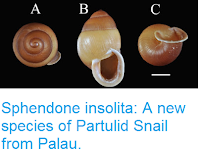Nudibranch Sea Slugs are marine Gastropod Molluscs that lose their shells during their larval stage. Like other Sea Slugs (not all of which are closely related) they are often colourful and have feathery external gills, and while often hard to tell apart from these other Sea Slug groups, can be distinguished by morphological examination. All Sea Slugs are externally biliterally symetrical, however Nudibraches are Opisthobranches (members of the same Gastropod group as the terrestrial Pulmonate Snails), and lack internal symmetry. This is manifested externally in the positioning of the sexual openings, with both male and female openings on the right side of the body. Almost all Nudibranches are benthic (live on the sea floor or other surfaces) and are found from the intertidal zone to the abyssal ocean floors, though most species are found on shallow tropical reefs.
In a paper published in the journal ZooKeys on 9 November 2016, Tatiana Korshunova of the Koltzov Institute of Developmental Biology of the Russian Academy of Sciences, and the Zoological Museum of the Moscow State University, Nadezhda Sanamyan of the Pacific Geographical Institute of the Far Eastern Branch of the Russian Academy of Sciences, Olga Zimina of the Murmansk Marine Biological Institute, Karin Fletcher of Port Orchard in Washington, USA, and Alexander Martynov, also of the Zoological Museum of the Moscow State University, describe two new species of Nudibranch Sea Slugs from the North Pacific and Arctic Oceans, both of which are placed in the widespread shallow water genus Dendronotus.
The first species is named Dendronotus arcticus, in reference to the area where it was found, the Laptev Sea to the north of Siberia, part of the Arctic Ocean. This species is brownish with scattered white dots and reaches 19 mm in length. It is found in soft substrates such as sand and mud with gravel and small stones.
Dendronotus arcticus, living specimens. Olga Zimina in Korshunova et al. (2016).
The second species is named Dendronotus robilliardi, in honour of the American marine biologist Gordon Robilliard for his work on the taxonomy of the genus Dendronotus. This species is a cryptic species, described from a population formerly assigned to the widespread species Dendronotus albus, but now identified as a separate species using molecular data. This species is translucent with opaque white stripes, and was found on stones and rocky seafloor feeding on the Hydroid Abietinaria annulata. The species was found in the waters around the Kanchatka Peninsula, but as Dendronotus albus was originally described from Baja California, Korshunova et al. suggest that populations assigned to this species from Korea to Washington State may in fact be Dendronotus robilliardi.
Dendronotus robilliardi. Nadezhda Sanamyan in Korshunova et al. (2016).
See also...
Follow Sciency Thoughts on Facebook.








